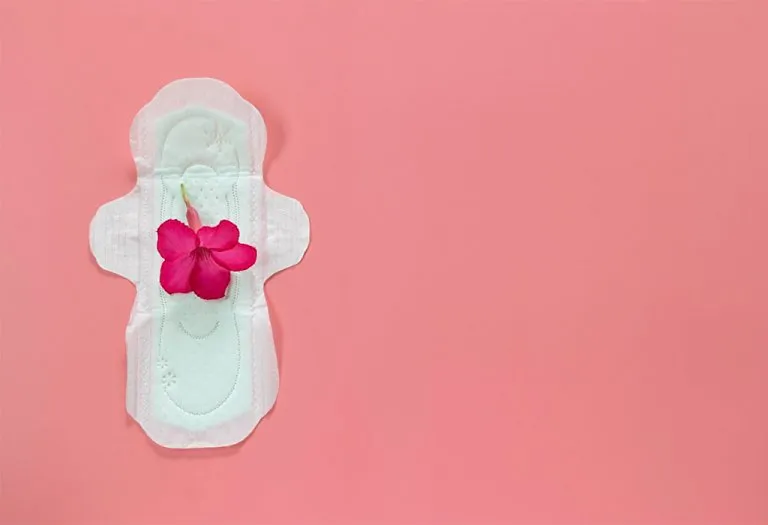Pink Discharge During Pregnancy – Is it Normal?
- What Is Pink Discharge During Pregnancy?
- Is Pink Discharge Normal While Pregnant?
- Normal Causes of Pink Discharge During Pregnancy
- Concerning Causes of Pink Discharge While Pregnant
- How to Prevent and Manage Pink Discharge in Pregnancy?
- When to Call a Doctor?
- FAQs
Pregnancy brings a lot of changes, and some can take you by surprise, like seeing pink discharge. It’s natural to feel a bit worried when you notice something different, especially if it’s not something you expected. However, pink discharge while pregnant is actually quite common and, in many cases, completely normal. It can happen for several harmless reasons, especially in early pregnancy. Still, it’s always good to understand what’s going on with your body. Knowing when it’s okay and when it might need medical attention can help you feel more at ease. In this article, we’ll explain what pink discharge means and when to reach out to your doctor. Keep reading to learn more and ease your worries with the facts!
What Is Pink Discharge During Pregnancy?
Pink discharge during pregnancy refers to light bleeding or spotting that appears pink in colour, often due to a small amount of blood mixing with vaginal discharge.
Is Pink Discharge Normal While Pregnant?
Pink discharge in early pregnancy can be normal in some cases. Around 15% to 25% of pregnant women experience some form of spotting or light bleeding in the first trimester, and pink discharge is often part of this (1) (2). It’s usually light and not a cause for concern if there’s no pain or heavy flow. As the blood gets older, it can turn brown, leading to brown discharge, which is also commonly seen during pregnancy.
Normal Causes of Pink Discharge During Pregnancy
Pink discharge and pregnancy can be connected in many ways, and in most cases, it’s a normal sign of the changes happening in your body. Let’s take a look at some common reasons it can happen:
1. Implantation Bleeding
This is one of the earliest causes of pink discharge. It happens when the fertilised egg attaches to the lining of your uterus, usually around 10 to 14 days after conception. The process can cause a small amount of bleeding, which may appear pink or light brown. It’s usually very light and lasts only a day or two (3).
2. Sex
Sex during pregnancy is safe in most cases, but the cervix is more sensitive now. After intercourse, you might notice a light pink discharge due to slight irritation or friction. It’s usually nothing to worry about and should go away within a few hours (4).
3. Vaginal Exams or Medical Procedures
As your pregnancy progresses, your doctor may do pelvic exams or cervical checks to monitor your progress. These exams can sometimes cause light spotting or pink discharge afterwards (5), especially in the second and third trimesters.
4. Bloody Show
A bloody show is a normal sign that your body is getting ready for labour. It usually happens in the last weeks of pregnancy. During pregnancy, a thick mucus plug blocks the cervix’s opening to help protect your baby. As your body prepares for labour, the cervix softens and opens, and this mucus plug comes out. When it does, you might see a small amount of pink, red, or brown discharge. It can look like stringy mucus with a bit of blood in it. This is called the “bloody show” (6).
Concerning Causes of Pink Discharge While Pregnant
While pink discharge is often harmless, there are times when it may be a sign of something more serious. Here are some possible causes of pink discharge that may need medical attention:
1. Miscarriage
A miscarriage is the loss of a pregnancy before 23 weeks. It often starts with light pink spotting that turns red and gets heavier. It may come with cramping, back pain, or the passing of tissue (7).
2. Ectopic Pregnancy
This is when a fertilised egg implants outside the uterus, usually in a fallopian tube. It can cause pink or brown discharge, sharp pain on one side of your lower abdomen, shoulder pain, or dizziness (8).
3. Infections
Vaginal or cervical infections, such as bacterial vaginosis, yeast infections, or UTIs, can irritate the cervix and lead to pink discharge. Other signs might include itching, burning, unusual odour, or discomfort when urinating (9).
4. Placenta Previa
Placenta previa is when the placenta partially or completely covers the cervix. It can cause painless pink or red bleeding, especially in the second or third trimester. It requires close monitoring and, in some cases, early delivery by C-section (10).
5. Placental Abruption
This is a serious condition where the placenta separates from the uterine wall before delivery. It causes sudden pink or red bleeding along with strong abdominal pain, cramping, or back pain (11).
6. Preterm Labour
If pink discharge happens along with regular contractions, lower back pain, or pelvic pressure before 37 weeks, it could be a sign of preterm labour (12).

7. Molar Pregnancy
A molar pregnancy is a rare condition where abnormal tissue grows inside the uterus instead of a healthy embryo. It can cause dark or pink discharge, along with severe nausea and a uterus that grows faster than expected (13).
8. Cervical Insufficiency
This means the cervix opens too early in pregnancy, often without pain or contractions. It may lead to a light pink discharge or a feeling of pressure. It can increase the risk of preterm birth (14).
How to Prevent and Manage Pink Discharge in Pregnancy?

While pink discharge during pregnancy isn’t always avoidable, there are simple steps you can take to reduce the chances of irritation or complications. And if you do notice it, there are ways to manage it safely. Here’s what you can do:
Prevention
To help prevent abnormal brown-pink discharge in early pregnancy or related complications (1):
- Avoid strenuous activity that could cause unnecessary pressure on the cervix or uterus, especially if your doctor advises pelvic rest.
- Stay hydrated and maintain a balanced diet to support hormonal balance and overall reproductive health.
- Wear breathable cotton underwear and avoid harsh soaps or douches to prevent irritation and infection.
- Attend all prenatal checkups so your doctor can monitor your progress and catch any early signs of complications.
Managing Pink Discharge
If you experience pink discharge while pregnant, here’s how to manage it safely (2):
- Monitor the discharge closely; note the colour, amount, and any accompanying symptoms like cramping or pain.
- Avoid inserting anything into the vagina, including tampons or performing internal exams unless directed by a doctor.
- Limit physical activity and rest as needed, especially if you notice spotting after exertion.
- Wear a panty liner to track the discharge and stay comfortable (avoid scented products).
When to Call a Doctor?
While light pink discharge during pregnancy’s 6 weeks can be normal, there are certain signs that shouldn’t be ignored. If you notice any of the following symptoms, it’s important to contact your doctor right away (1) (2):
- Heavy bleeding (soaking a pad in an hour or passing clots)
- Bright red discharge that doesn’t stop
- Strong abdominal cramping or back pain
- Dizziness, fainting, or signs of low blood pressure
- Fever, chills, or foul-smelling discharge
- Persistent spotting or bleeding in the second or third trimester

FAQs
1. Should I worry if I see pink discharge later in pregnancy?
Pink discharge in the second or third trimester warrants more attention. While it can still be harmless, it may also indicate issues like cervical changes, early labour, or placental problems. It’s best to contact your doctor to be sure.
2. How long does pink discharge usually last?
If it’s due to implantation, pink discharge typically appears 10–14 days after conception and lasts only a day or so (3). However, pink discharge can also occur anytime during pregnancy for different reasons, and the duration may vary depending on the cause.
3. Can pink discharge during the first, second, and third trimester affect my baby?
In most cases, pink discharge does not pose a risk to your baby, especially if it’s light and occurs in the first trimester. However, if it’s heavy or accompanied by severe cramping or other concerning symptoms, it could indicate a more serious issue.
While pink discharge can be a normal part of pregnancy, it’s something that shouldn’t be overlooked. Every pregnancy is unique, and what’s normal for one person may not be for another. Trust your instincts, keep track of any changes, and don’t hesitate to reach out to your doctor with questions. It’s always better to ask than assume.
References/Resources:
1. Cleveland Clinic – Bleeding During Pregnancy
2. March of Dimes – Bleeding and spotting from the vagina during pregnancy
3. Cleveland Clinic – Implantation Bleeding
4. March of Dimes – Sex during pregnancy
5. Cleveland Clinic – Pelvic Exam
6. Cleveland Clinic – Bloody Show
8. Cleveland Clinic – Ectopic Pregnancy
9. Cleveland Clinic – Urinary Tract Infections
10. National Library of Medicine – Placenta Previa
11. National Library of Medicine – Placental Abruption
12. Cleveland Clinic – Preterm Labor
13. Cleveland Clinic – Molar Pregnancy
14. Tommy’s – Weak cervix (cervical incompetence): symptoms, causes and treatment
Also Read:
Yellow Discharge when Pregnant
Green Discharge while Pregnant
Losing Your Mucus Plug during Pregnancy
Clear (Watery) Vaginal Discharge in Pregnancy
Was This Article Helpful?
Parenting is a huge responsibility, for you as a caregiver, but also for us as a parenting content platform. We understand that and take our responsibility of creating credible content seriously. FirstCry Parenting articles are written and published only after extensive research using factually sound references to deliver quality content that is accurate, validated by experts, and completely reliable. To understand how we go about creating content that is credible, read our editorial policy here.























